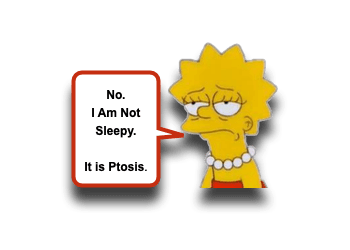Myasthenia Gravis in Children

“Weakness” as a complaint has always caused me to feel a bit fatigued. The differential is quite large and sorting through it can be challenging. Is it related to a recent viral infection (ex, Guillain Barre)? Is it due to an electrolyte abnormality (ex, Hypoglycemia, Hyperkalemia)? Is it occurring after a recent romp in the woods (ex, Tick Paralysis)? Could it be an unusual neurologic condition (ex, Multiple Sclerosis)? All of these are good considerations, but let us not overlook another important consideration that may be easily missed initially – Myasthenia Gravis in Children:
Myasthenia Gravis in Children: Basics
- Myasthenia Gravis (MG) is: [VanderPluym, 2013; Lieu, 2013; Rook, 2010]
- Heterogenous group of conditions that affect the neuromuscular junction.
- Acquired or genetic disorder.
- Known to affect ANY skeletal muscle groups.
- Most commonly affecting the ocular muscles (~50% of cases).
- Bulbar involvement is next most common (~15%)
- Myasthenia Gravis in children is classified as: [VanderPluym, 2013; Lieu, 2013; Rook, 2010]
- Transient Neonatal MG
- Self-limited – resolves within ~2 months.
- Related to placental transfer of maternal acetylcholine receptors (AChR) antibodies
- Congenital MG
- Rare genetic disorders that affect protein expression within the neuromuscular junction
- Can affect presynaptic, synaptic, or postsynaptic proteins.
- Often present with:
- Hypotonia
- Delayed motor milestones
- Weak and underdeveloped muscles
- May mimic congenital myopathies, muscular dystrophies, or inborn errors of metabolism.
- Juvenile MG
- The most common category of MG in children.
- Autoimmune antibody-mediated disorder.
- Antibodies most commonly target acetylcholine receptors (AChR)
- Other variations target other receptors, like Muscle-Specific Kinase receptor.
- Causes:
- Fluctuating and Fatigable skeletal muscle weakness
- Presents as:
- Ptosis
- Opthalmoplegia and/or Diplopia
- Bulbar weakness:
- Dysphagia
- Dysphonia
- Generalized weakness and exercise intolerance
- Fatigue
- May progress to respiratory distress and arrest.
- Transient Neonatal MG
Myasthenia Gravis in Children: Management
- Diagnosis is based mainly on clinical presentation. [VanderPluym, 2013; Lieu, 2013; Rook, 2010]
- May be misdiagnosed initially.
- Requires a HIGH index of suspicion.
- Inquire about prior similar events (ie, episodes of remission and relapse).
- Inquire and look for fatiguing symptoms.
- Repetitive abduction of the arm (fatiguing the deltoid)
- Sustained voluntary upward gaze for > 1 minute (fatiguing the levator palpebrae)
- Diagnosis can be supported by: [VanderPluym, 2013; Rook, 2010]
- Edrophonium chloride (Tensilon) testing
- Serum antibody testing
- Genetic testing
- Electromyography studies
- Treatments are tailored to the individual and may include: [Lieu, 2013; Rook, 2010]
- Respiratory Support
- Acute respiratory distress should be managed with usual focus on supporting oxygenation, ventilation, and airway protection.
- Non-invasive strategies may prove useful. [Piastra, 2005]
- Be prepared to intubate acute cases, however.
- Anticholinesterase agents (ex, Pyridostigmine)
- Chronic immunomodulating Rx (ex, steroids, azathioprine, cyclosporine)
- Rapid immunomodulation Tx (ex, plasmapheresis, plasma exchange, IVIG)
- Thymectomy
- Respiratory Support
Moral of the Morsel
- Weakness can make you Wonder. Place Myasthenia Gravis on that Ddx!
- Ask the right questions. Recurrent episodes may be a clue to Remission and Relapse.
- “Flap your arms. Look Up.” Two simple physical exam tests to look for fatiguable weakness.

